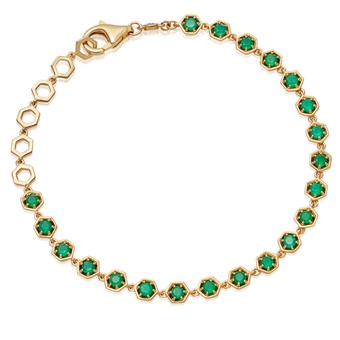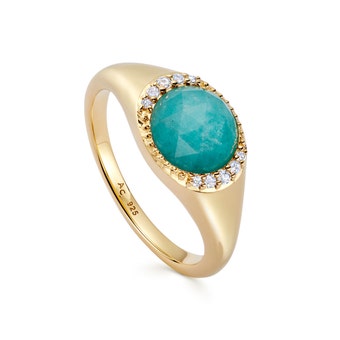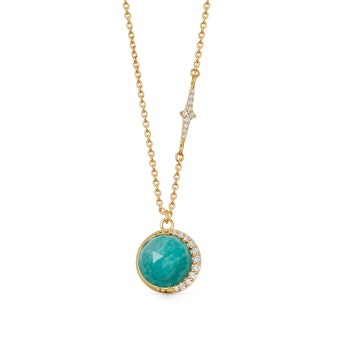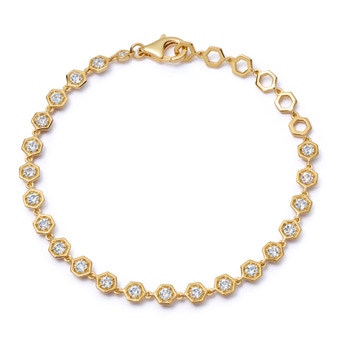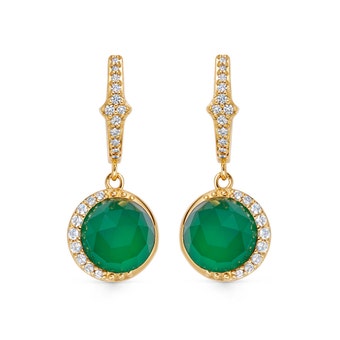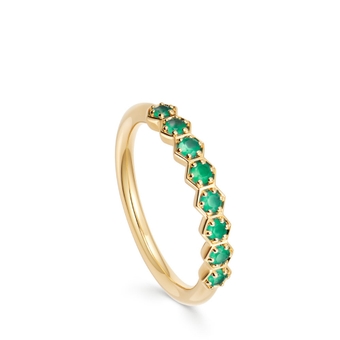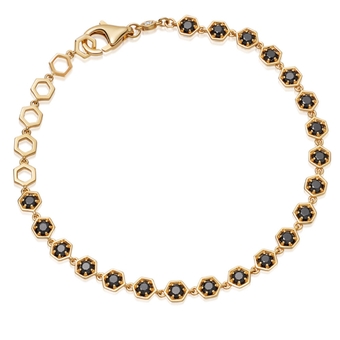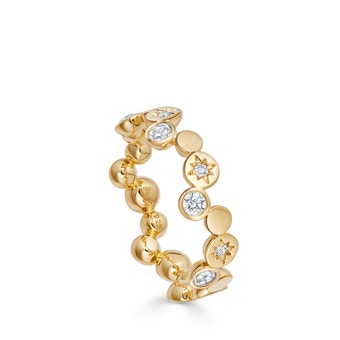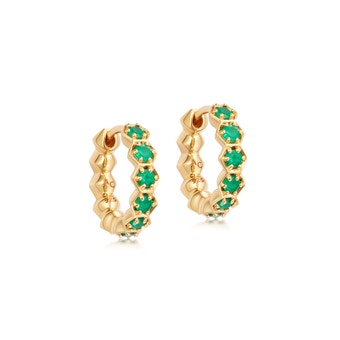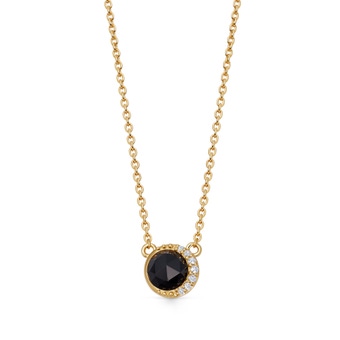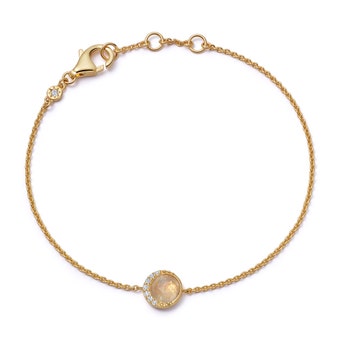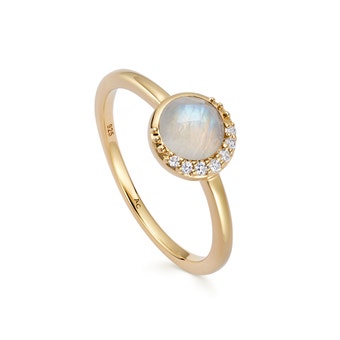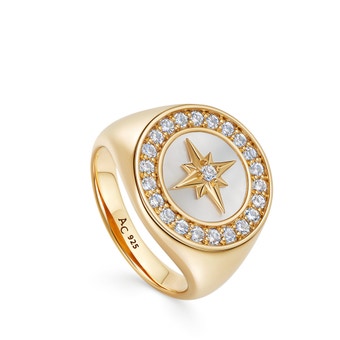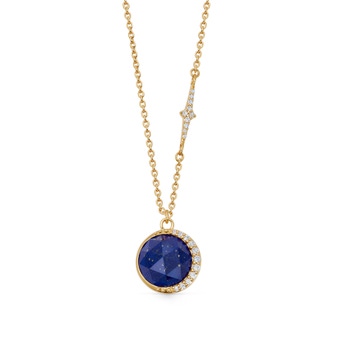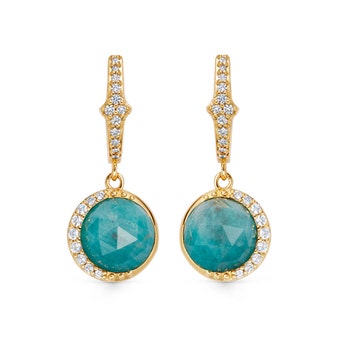
Gemstone Jewellery
Beautifully colourful and specifically cut to show off their light-reflective properties, our signature gemstone designs are sure to brighten days. Opal, rainbow moonstone, amazonite and many more precious pieces await, ready to bring a burst of colour to your jewellery collection, each holding its own unique meaning.
115 Items
-
Gold Deco Amazonite Pendant
£128.00+ 1+ More colours available £128.00
£128.00 £128.00
£128.00 £128.00
£128.00 £128.00New Season
£128.00New Season -
Gold Polaris Mother of Pearl Locket Bracelet
As low as £168.00+ 1+ More colours available As low as £168.00
As low as £168.00 As low as £168.00
As low as £168.00 As low as £168.00
As low as £168.00 As low as £168.00
As low as £168.00 -
Gold Green Agate Deco Tennis Bracelet
As low as £198.00+ 0+ More colours available As low as £198.00
As low as £198.00 As low as £198.00
As low as £198.00 As low as £198.00
As low as £198.00 -
Gold Deco Mother of Pearl and Amazonite Spinner Ring
As low as £128.00+ -1+ More colours available As low as £128.00
As low as £128.00 As low as £128.00New Season
As low as £128.00New Season -
Gold Polaris Mother of Pearl Locket Necklace
As low as £198.00+ 1+ More colours available As low as £198.00
As low as £198.00 As low as £198.00
As low as £198.00 As low as £198.00
As low as £198.00 As low as £198.00
As low as £198.00 -
Gold Deco Lapis Drop Huggies
£148.00+ 1+ More colours available £148.00
£148.00 £148.00
£148.00 £148.00
£148.00 £148.00New Season
£148.00New Season -
Gold Polaris Lapis Signet Ring
As low as £148.00+ -1+ More colours available As low as £148.00
As low as £148.00 As low as £148.00New Season
As low as £148.00New Season -
+ 1+ More colours available
 £128.00
£128.00 £128.00
£128.00 £128.00
£128.00 £128.00New Season
£128.00New Season -
Gold Polaris Lapis Locket Bracelet
As low as £168.00+ 1+ More colours available As low as £168.00
As low as £168.00 As low as £168.00
As low as £168.00 As low as £168.00
As low as £168.00 As low as £168.00
As low as £168.00 -
Gold Deco Lapis and Malachite Spinner Ring
As low as £128.00+ -1+ More colours available As low as £128.00
As low as £128.00 As low as £128.00New Season
As low as £128.00New Season -
+ 1+ More colours available
 £148.00
£148.00 £148.00
£148.00 £148.00
£148.00 £148.00New Season
£148.00New Season -
Gold Deco Amazonite Drop Huggies
£148.00+ 1+ More colours available £148.00
£148.00 £148.00
£148.00 £148.00
£148.00 £148.00New Season
£148.00New Season -
Gold Luna Amazonite Signet Ring
As low as £138.00+ 3+ More colours available As low as £138.00
As low as £138.00 As low as £138.00
As low as £138.00 As low as £138.00
As low as £138.00 As low as £138.00
As low as £138.00 As low as £138.00
As low as £138.00 As low as £138.00
As low as £138.00 -
Gold Large Luna Amazonite Pendant Necklace
As low as £178.00+ 3+ More colours available As low as £178.00
As low as £178.00 As low as £178.00
As low as £178.00 As low as £178.00
As low as £178.00 As low as £178.00
As low as £178.00 As low as £178.00
As low as £178.00 As low as £178.00
As low as £178.00 -
Gold Polaris Malachite Locket Necklace
As low as £198.00+ 1+ More colours available As low as £198.00
As low as £198.00 As low as £198.00
As low as £198.00 As low as £198.00
As low as £198.00 As low as £198.00
As low as £198.00 -
Gold Deco Malachite Drop Huggies
£148.00+ 1+ More colours available £148.00
£148.00 £148.00
£148.00 £148.00
£148.00 £148.00New Season
£148.00New Season -
Gold Deco Malachite Pendant
£128.00+ 1+ More colours available £128.00
£128.00 £128.00
£128.00 £128.00
£128.00 £128.00New Season
£128.00New Season -
Gold White Sapphire Deco Tennis Bracelet
As low as £198.00+ 0+ More colours available As low as £198.00
As low as £198.00 As low as £198.00
As low as £198.00 As low as £198.00Currently Sold Out
As low as £198.00Currently Sold Out -
+ -1+ More colours available
 £118.00
£118.00 £118.00
£118.00 -
Gold Polaris Lapis Locket
As low as £198.00+ 1+ More colours available As low as £198.00
As low as £198.00 As low as £198.00
As low as £198.00 As low as £198.00
As low as £198.00 As low as £198.00
As low as £198.00 -
Gold Deco Lapis Pendant
£128.00+ 1+ More colours available £128.00
£128.00 £128.00
£128.00 £128.00
£128.00 £128.00New Season
£128.00New Season -
Gold Polaris Malachite Locket Bracelet
As low as £168.00+ 1+ More colours available As low as £168.00
As low as £168.00 As low as £168.00
As low as £168.00 As low as £168.00
As low as £168.00 As low as £168.00
As low as £168.00 -
+ 0+ More colours available
 £98.00
£98.00 £98.00
£98.00 £98.00
£98.00 -
Gold Large Polaris Malachite Locket Necklace
As low as £295.00+ 4+ More colours available As low as £295.00
As low as £295.00 As low as £295.00
As low as £295.00 As low as £295.00
As low as £295.00 As low as £295.00
As low as £295.00 As low as £275.00
As low as £275.00 As low as £295.00
As low as £295.00 -
Gold Luna Green Chalcedony Drop Earrings
As low as £198.00+ 3+ More colours available As low as £198.00
As low as £198.00 As low as £198.00
As low as £198.00 As low as £198.00
As low as £198.00 As low as £198.00
As low as £198.00 As low as £198.00
As low as £198.00 As low as £198.00
As low as £198.00 -
Gold Polaris Black Onyx Locket Bracelet
As low as £168.00+ 1+ More colours available As low as £168.00
As low as £168.00 As low as £168.00
As low as £168.00 As low as £168.00
As low as £168.00 As low as £168.00
As low as £168.00 -
Gold Deco Green Agate Half Eternity Ring
As low as £128.00 -
Gold Large Polaris Rhodochrosite Locket Necklace
As low as £295.00+ 4+ More colours available As low as £295.00
As low as £295.00 As low as £295.00
As low as £295.00 As low as £295.00
As low as £295.00 As low as £295.00
As low as £295.00 As low as £275.00
As low as £275.00 As low as £295.00
As low as £295.00 -
Gold Large Polaris Copper Turquoise Locket Necklace
As low as £295.00+ 4+ More colours available As low as £295.00
As low as £295.00 As low as £295.00
As low as £295.00 As low as £295.00
As low as £295.00 As low as £295.00
As low as £295.00 As low as £275.00
As low as £275.00 As low as £295.00
As low as £295.00 -
Gold Large Polaris Black Onyx Locket Necklace
As low as £295.00+ 3+ More colours available As low as £295.00
As low as £295.00 As low as £295.00
As low as £295.00 As low as £295.00
As low as £295.00 As low as £295.00
As low as £295.00 As low as £295.00
As low as £295.00 As low as £295.00
As low as £295.00 -
Gold Black Spinel Deco Tennis Bracelet
As low as £198.00+ 0+ More colours available As low as £198.00
As low as £198.00 As low as £198.00
As low as £198.00 As low as £198.00
As low as £198.00 -
Gold Large Polaris Lapis Locket
As low as £295.00+ 4+ More colours available As low as £295.00
As low as £295.00 As low as £295.00
As low as £295.00 As low as £295.00
As low as £295.00 As low as £295.00
As low as £295.00 As low as £295.00
As low as £295.00 As low as £295.00
As low as £295.00 -
Silver Large Polaris Mother of Pearl Locket Necklace
As low as £275.00+ 5+ More colours available As low as £275.00
As low as £275.00 As low as £295.00
As low as £295.00 As low as £295.00
As low as £295.00 As low as £295.00
As low as £295.00 As low as £295.00
As low as £295.00 As low as £295.00
As low as £295.00 -
Gold Polaris Black Onyx Locket Necklace
As low as £198.00+ 1+ More colours available As low as £198.00
As low as £198.00 As low as £198.00
As low as £198.00 As low as £198.00
As low as £198.00 As low as £198.00
As low as £198.00 -
Gold Large Polaris Abalone Locket Necklace
As low as £295.00+ 5+ More colours available As low as £295.00
As low as £295.00 As low as £275.00
As low as £275.00 As low as £295.00
As low as £295.00 As low as £295.00
As low as £295.00 As low as £295.00
As low as £295.00 As low as £295.00
As low as £295.00 -
Gold Polaris North Star White Sapphire Ring
As low as £98.00 -
Gold Deco Green Agate Huggie Earrings
As low as £128.00+ -1+ More colours available As low as £128.00
As low as £128.00 As low as £128.00
As low as £128.00 -
Gold Luna Black Onyx Pendant Necklace
As low as £118.00+ 3+ More colours available As low as £118.00
As low as £118.00 As low as £118.00
As low as £118.00 As low as £118.00
As low as £118.00 As low as £118.00
As low as £118.00 As low as £118.00
As low as £118.00 As low as £118.00
As low as £118.00 -
Gold Luna Moonstone Bracelet
As low as £108.00+ 3+ More colours available As low as £108.00
As low as £108.00 As low as £108.00
As low as £108.00 As low as £108.00
As low as £108.00 As low as £108.00
As low as £108.00 As low as £108.00
As low as £108.00 As low as £108.00
As low as £108.00 -
Gold Luna Moonstone Ring
As low as £98.00+ 3+ More colours available As low as £98.00
As low as £98.00 As low as £98.00
As low as £98.00 As low as £98.00
As low as £98.00 As low as £98.00
As low as £98.00 As low as £98.00
As low as £98.00 As low as £98.00
As low as £98.00 -
Gold Polaris Mother of Pearl Signet Ring
As low as £148.00+ -1+ More colours available As low as £148.00
As low as £148.00 As low as £148.00
As low as £148.00 -
Gold Large Luna Lapis Pendant Necklace
As low as £178.00+ 3+ More colours available As low as £178.00
As low as £178.00 As low as £178.00
As low as £178.00 As low as £178.00
As low as £178.00 As low as £178.00
As low as £178.00 As low as £178.00
As low as £178.00 As low as £178.00
As low as £178.00 -
Gold Luna Amazonite Drop Earrings
As low as £198.00+ 3+ More colours available As low as £198.00
As low as £198.00 As low as £198.00
As low as £198.00 As low as £198.00
As low as £198.00 As low as £198.00
As low as £198.00 As low as £198.00
As low as £198.00 As low as £198.00
As low as £198.00 -
+ 0+ More colours available
 £98.00
£98.00 £98.00
£98.00 £98.00
£98.00 -
+ 0+ More colours available
 £98.00
£98.00 £98.00
£98.00 £98.00
£98.00 -
+ 0+ More colours available
 £98.00
£98.00 £98.00
£98.00 £98.00
£98.00


GEMSTONE JEWELLERY
Our signature gemstone designs await, ready to bring a burst of colour to your jewellery collection, each holding its own unique meaning. Our day-brightening selection of gemstone jewellery is made to be stacked, layered, gifted and enjoyed every day. Find your favourites amongst this edit of birthstone jewellery, vibrant turquoise jewellery, our iconic moonstone ring, adorned hoop earrings and more. All of our gemstones are ethically sourced, and cut and polished by hand for a radiant finish. This five-star rated jewellery makes for personal gifts, with distinctive designs and meancingful gemstones to suit all personalities.
Precious, Semi-Precious Stone Jewellery
Beautifully colourful and specifically cut to show off their light-reflective properties, our signature gemstone jewellery is sure to enliven your jewellery stacks. Opal, ruby, sapphire, rainbow moonstone, amazonite, pearl and many more precious pieces await, ready to bring a burst of colour to your jewellery collection, each holding its own unique meaning.
Read our Gemstone Guide to learn more
Diamond jewellery ETHICAL AND RESPONSIBLY SOURCED
We work exclusively with noble metals and ethically sourced diamonds and gemstones. We are a conscious brand, and our purpose is to design diamond jewellery that will last, not its effect on the planet. That’s why we encourage everyone to go precious, every day. Choose our eco-friendly packing at the checkout to help us reduce our carbon footprint.


